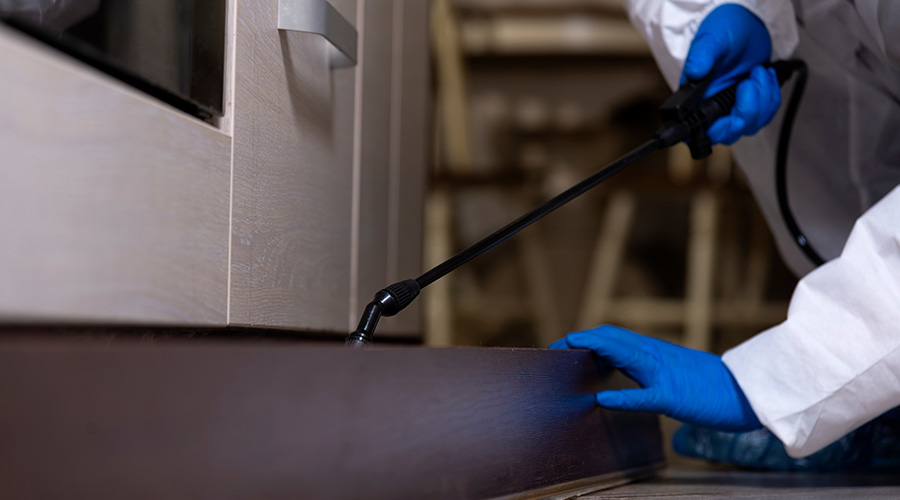Challenges of Ensuring Reliable Supply of Spare Parts and Replacement Equipment
OTHER PARTS OF THIS ARTICLEPt. 1: This Page
*Frank Lucas, Assistant Director, Work Management, University of Nevada, Las Vegas
*Laura Reynolds, Assistant Director of Facilities Operations, Texas Children's Hospital, Houston
No area within maintenance and engineering departments is so essential for success, yet so misunderstood as the inventory of replacement parts and equipment. Without a reliable, accessible supply of these materials, front-line technicians cannot carry out their daily tasks as efficiently and cost-effectively. Unfortunately, many managers do not have control of their organizations' inventory for maintenance, repair and operations and, as a result, waste resources and undermine productivity.
Q. How has your department's inventory-management system evolved in recent years?
REYNOLDS: Since I have been here, I have seen inventory almost do a 360. Originally, the inventory was in one location. Then we took a zoned approach with our engineering technicians, and we assigned (the inventory) to different buildings. We were thinking at the time that what would be most efficient was to set up satellite storerooms in each of the buildings so they wouldn't have to travel so far to get their supplies. What we found out is that was not working well. The satellites had duplicated inventory, so there was an additional cost. We really didn't staff the (inventory) areas, so when they went to look for something, they were on their own. And if they didn't find it in their building, they didn't know where to find it, so they'd go building to building to try to find their supplies. What we decided would be more efficient would be to consolidate all of the supplies in one location, and we worked with our supplier.
LUCAS: The last 10 years, the budget has really been the driver (behind changes). We've also put up some new facilities, so having to stock newer parts has been an issue. We're also trying to make green purchases as often as possible, which can greatly impact the first cost but could also be more effective in the long run. Properly documenting our purchases, the types of purchases we make and where we use the parts and materials helps justify our overhead costs and the expenditures we make. We're also concerned about purchase prices and making sure we're getting the best deal possible, so having historical cost data at our disposal for cost comparison and contract negotiation has really proven to be helpful.
Q. What particular inventory-management challenges do you face because of your organization's activities?
LUCAS: The main challenge is that we have old facilities and brand new facilities, so we're dealing with a wide range of construction techniques and building materials, interior finishes and technologies. Ensuring we're stocking the appropriate materials and quantities is important. We're also constantly phasing out obsolete or soon-to-be obsolete items. Storage is also an issue as our campus grows and space becomes an issue, we're finding that storage areas we used to have are no longer available to us, so rightsizing our inventory by stocking the optimum amount of daily-use items and critical spares is really key to living within our means.
REYNOLDS: New facility growth is definitely one (challenge), but I think the primary drivers were really budget constraints and making the most effective use of our technicians' time. We don't want them spending time looking for supplies. We want them actually completing work orders. The other challenge with health care is that we're limited in space, and that presents a challenge for us. We really have to make the best use of the space we're given to work with. That has forced us to look for unique approaches. For example, with the bulk storage of filters, we don't have room to store them. So we're working with our supplier to develop a PM kitting program. We'll let them know when our PMs are coming up on the air-handling unit, what supplies we'll need for it, and they'll kit those for us and then do a just-in-time delivery.
Q. What steps have you taken to streamline your department's inventory-management process?
REYNOLDS: One thing we've done is make sure we have a specific list of items we know we need so we're not ordering 27 different types of lamps like we did at one point in time. We narrow it down to a specific type of product, and that has helped us tremendously. We have definitely experienced some cost savings, and we've increased our technicians' productivity.
LUCAS: In 2007, we conducted an in-house efficiency study to identify and flow-chart our department's processes, measure and validate our workload, and poll our customer satisfaction, among other things. From there, we were able to identify any duplication of effort and where we were deficient and what our manpower needs would be, based on a new model of operation. We also determined items that were obsolete or no longer needed that were taking up valuable storage space. Other things we've been doing revolve around tighter control with regard to stock in our warehouse. Ordering and receiving can only be done by warehouse personnel, where that wasn't always the case before. Stock removals must be documented on the work orders or sales orders, and a chargeback feature helps us ensure proper budgets are debited and credited.
(These steps) have definitely opened up more storage space for us. It's also resulted in more stable and predictable pricing on the materials that we do stock, better control of what we order, and more accurate stock-turnover rates. We receive stock faster, cycle times and encumbrance periods are must shorter, and we have better accountability for what was purchased, who purchased it and for what purpose.
Q. What role has your department's CMMS played in streamlining inventory management?
REYNOLDS: When technicians come to check out supplies, they have to provide a work-order number that helps us track where our supplies are being used. In turn, we're able to generate reports to charge back to the appropriate cost centers for the supplies. We're also able to generate a report to assist with purchase requisitions. We also keep the supply locations, so if a technician comes in and wants a supply, we can pull that up in the CMMS and we know exactly where to go — what shelf and what bin number.
LUCAS: We make a requisition in our CMMS and send it to the purchasing system. Once the buyer approves the requisition and assigns a PO number, the requisition in the CMMS is converted to a PO using the same number the purchasing system assigned. This gives the purchasing system a means of tracking the details of the transaction and tracking all the information they need to do their job, while our CMMS has all the details of the parts, where they were used, where they're being stored, and it gives us the opportunity to recover costs against specific jobs by billing those things out. Because the POs are documented and received in our CMMS, we now have full cradle-to-grave tracking.
Q. What lessons have you learned related to streamlining inventory management?
LUCAS: The main thing is being very mindful of what's in your warehouse. It's easy to turn around one day and find you're stocking materials that are either obsolete or are for assets you no longer own or maintain. The fast pace of technological change can render parts obsolete in a hurry. This means that stock PAR levels must be given careful consideration and continually be re-evaluated. Purchasing a large quantity at a low price per unit might look appealing initially, but not at the expense of having to throw out unused quantities due to technological changes. Changing technology also gives rise to quality, reliability and functionality issues, as well as increased initial cost. This can readily be seen in the lighting industry, where incandescent lamps and fixtures are now giving way to CFLs and LEDs. Issues such as the potential for generating new hazardous waste streams in the cast of CFLs and promises of greatly extended lamp life in the case of LEDs must be carefully evaluated against higher cost to determine true product value. It's tough to separate the true claims from the false ones, so managers must really do their homework.
REYNOLDS: The biggest lesson for us has been using available resources, whether they are through suppliers or other inventory-management experts. Look at best practices, borrow what you can, and try different approaches to see what works best.
Related Topics:











